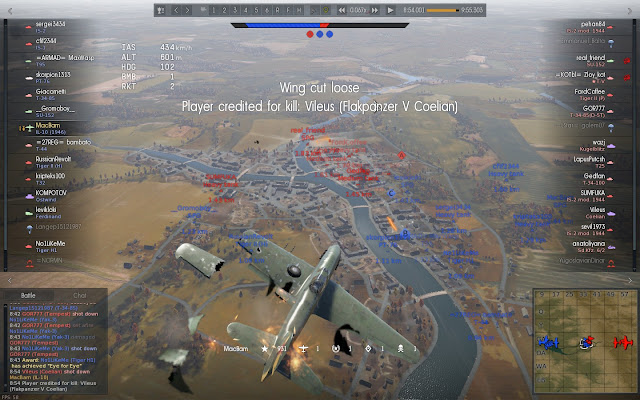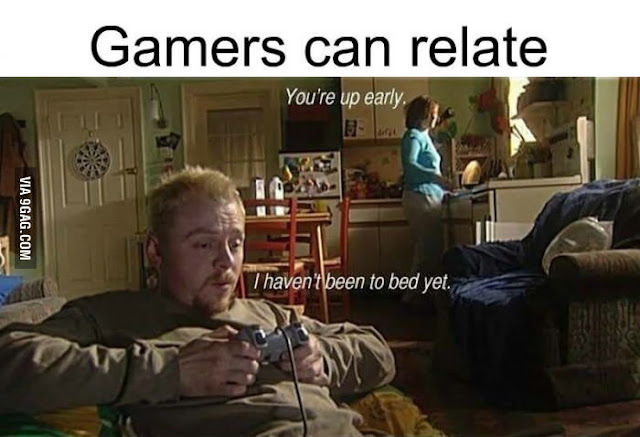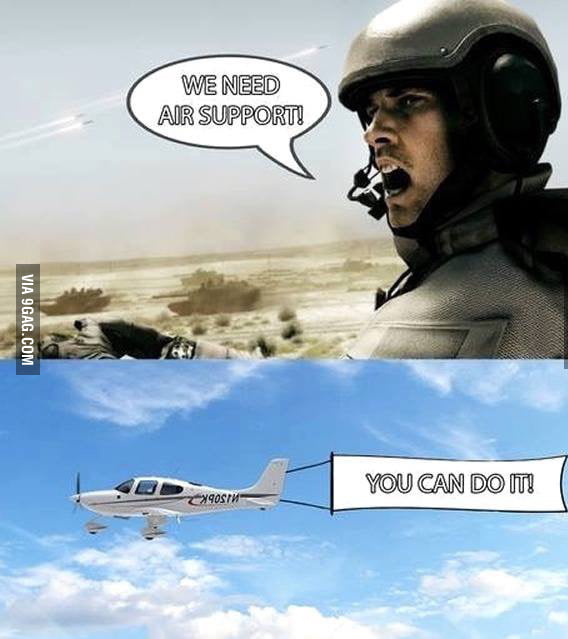Air domination used to be a very, very difficult mode to win even for a full squad of good players when it was new, but nowadays it's at approximately BR 4.7-6.0 likely the easiest-to-win match mode for good players. The reasons are the simplicity (no conflicting tactics of base or ground forces bombing) and in the poor tactical behaviour of most red players. Even poor red players are a major threat to most well-flown bombers, but little threat to a good fighter tactician.
First thing to do in an air domination match is to violate rule #1 of War Thunder: "Do not trust in blue players". This bites back at times, but usually it's a successful bet in this particular case. Trust them to avoid a red capture of the objective at the beginning of the match, do not fly towards A. Alternatively, detach but one squad member to prevent a capture (by climbing towards the objective).
Capture is typically possible only at 800-4,700 m altitude (3,000-15,000 ft) in air domination.
Instead, turn 90° to the left or right (preferably towards the sun) and climb at optimum climb rate (usually 20-25° in "F4" view, above 4,000 m /13,000 ft usually 15-20° with WEP. Climb to a commanding height (ideally 2.5 km / 9,000 ft above the reds at A) before you enter air combat. I usually turn towards A no sooner than at 4 km altitude.
Then always keep situational awareness; distances to reds, counter-climb when they try to attack from above (rope-a-dope; climb till they stall or give up, then dive down to attack them) and avoid becoming too slow (your energy state = potential energy + kinetic energy!). You may then boom 'n zoom (dive, kill, race away or climb again directly) to kill. Prefer targets neither too low nor showing awareness of your threat. The Fw 190A-4 is an ideal plane for this, but I-185, P-63 and particularly P-47 are just fine examples as well. Planes with less firepower, high drag (I-153, A6M etc.) or poor climb rate at medium altitudes are not as good. Your plane should also be deterring; a P-38 or Bf 109F-4 may be easily able to boom and zoom against targets, but red players don't respect such planes and will climb to engage. Sooner or later, this may cause trouble, as you lose energy during every BnZ attack.
Self-discipline is key, for overly aggressive players will waste a lot of energy in BnZ against low-flying red planes and may even find themselves vulnerable to the red furball sooner or later. You should also avoid turning much during BnZ attacks; a historical rule of thumb was to avoid turns greater than 90°. You better abort your attack and climb to safety instead of turning more! The more you turn, the more energy you bleed, and the less likely you will be able to climb to safety afterwards (that's what the proposed 2.5 km altitude advantage is for).
You can also combine BnZ and rope-a-dope in a pair of fighters, particularly if you both use voice chat (War Thunder's or a client like Teamspeak): One squad member counter-climbs when a red climbs for an attack, and while said red player is still focused on him another squad player does a BnZ attack on him from outside his field of view. This yields either a lot of kills or discourages red players from climbing for a challenge, leaving you BnZ attacks on unsuspecting reds below.
You will notice that red players begin to respawn in less capable planes later in the match. You will have missed the bombers among the original spawns (players who didn't pay attention and expected ground strike, I suppose) during your initial climb, but most bomber spawns (save for B-25 and PBJ types) will be around the end of the match - easy kills if you're still ready to kill that late!
It is possible to dominate in an air domination match with a feeling of
near-invulnerability in a fast plane, particularly with support from
squad mates. This merely takes the right tactic (and absence of major bad luck). One could have expected War Thunder players to be particularly tough opponents in air domination, since nothing but fighters makes sense in there, but the reds (and blues) keep derping, so it's actually an easier mode than ground strike (once ground strike becomes complicated due to heavy bombers at about BR 4.7).
Now do me a favour and forget all this once you see my name (A2A_only_project) in red in an air domination match! In that case, you should preferably stay at fighter spawn altitude and cruise in circles without looking up. Or spawn in a bomber and stay at bomber spawn altitude.
Thanks in advance.
P.S.: "zoom" in "boom 'n zoom" describes the climb phase, not the dive!
Thanks in advance.
P.S.: "zoom" in "boom 'n zoom" describes the climb phase, not the dive!






